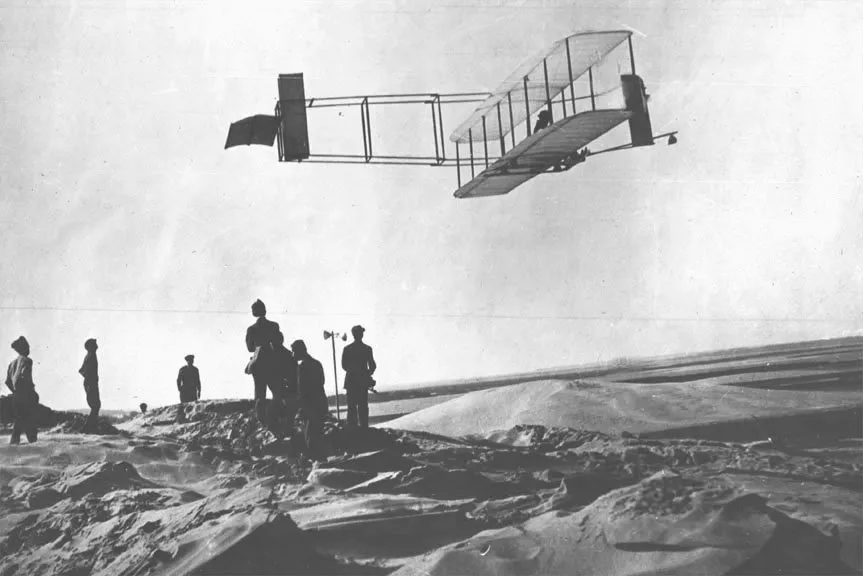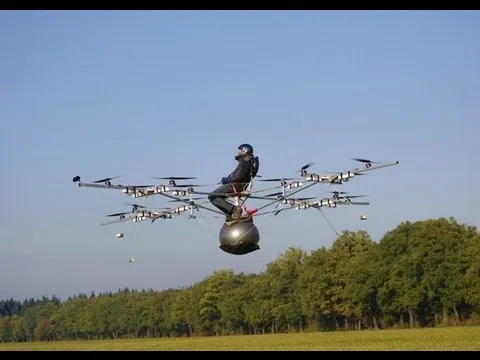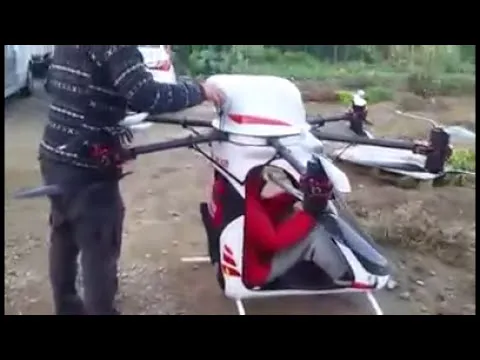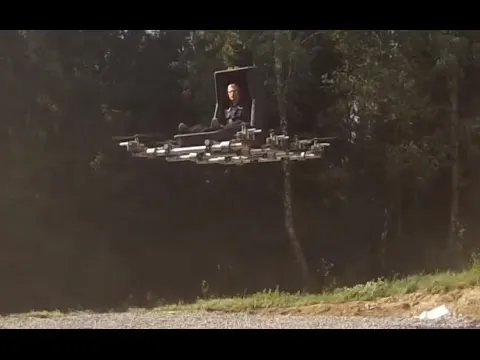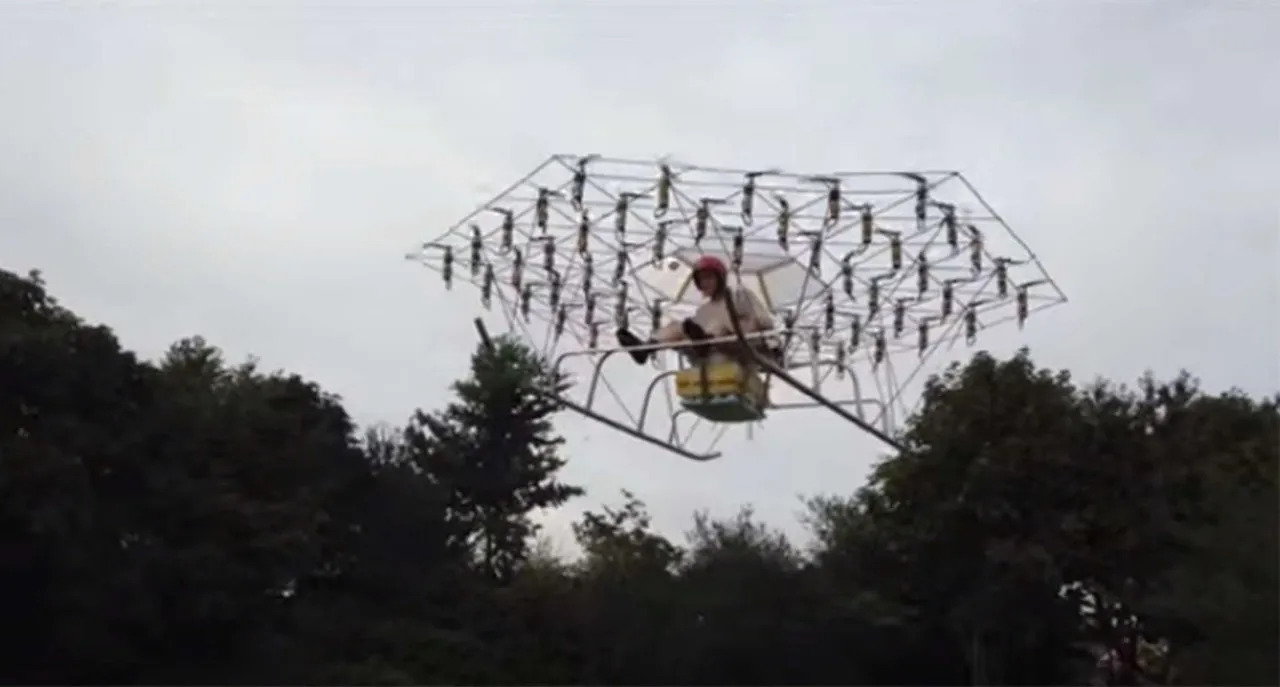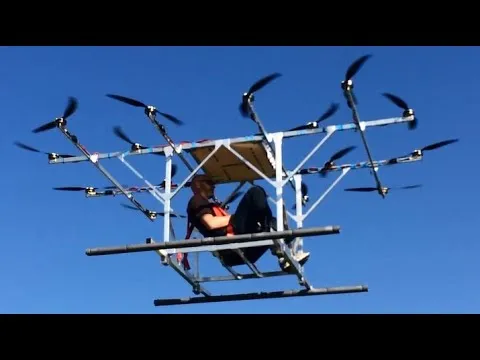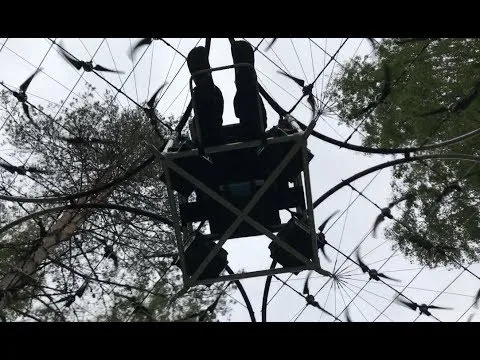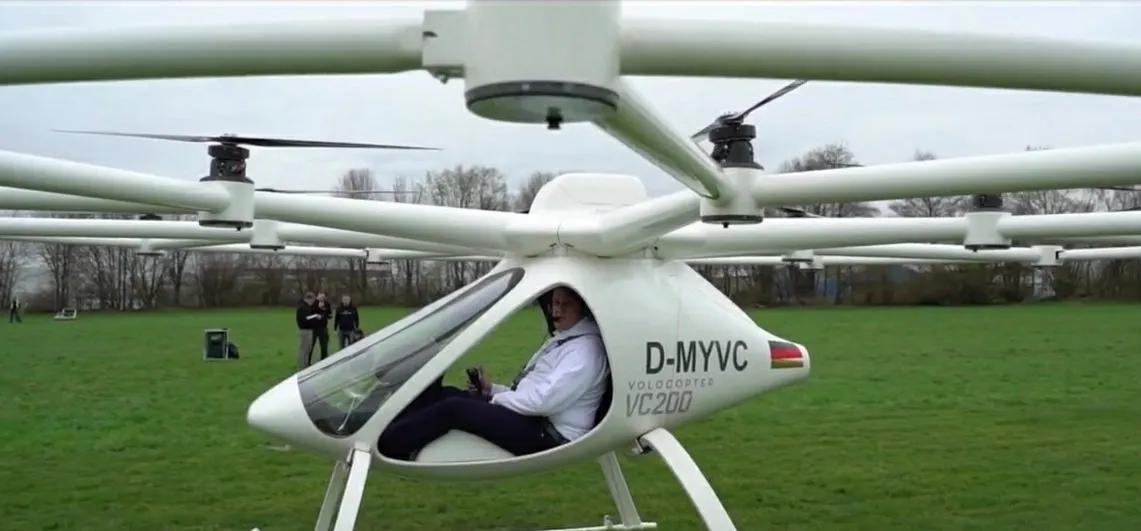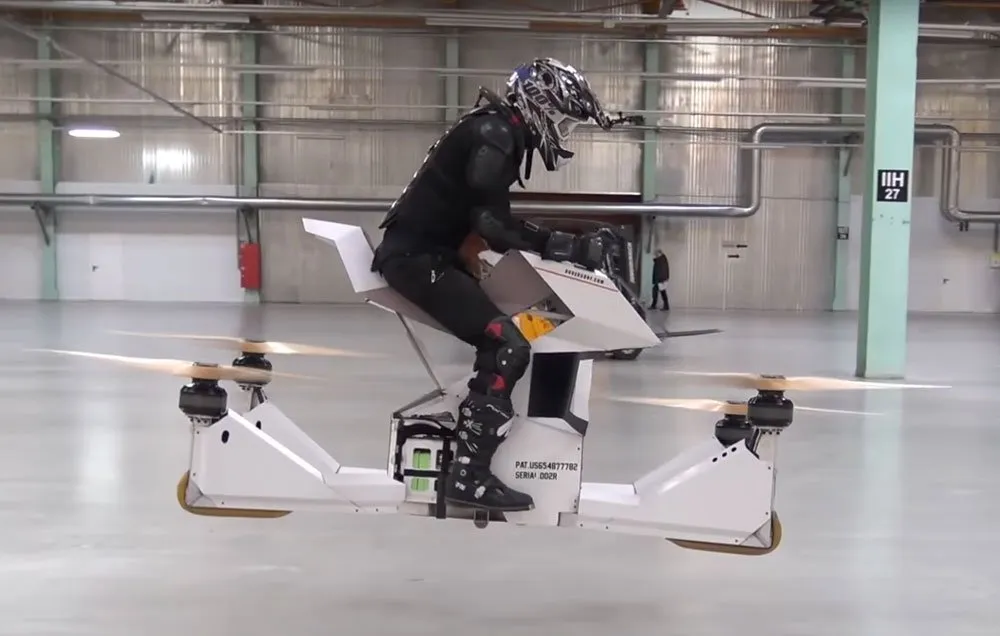In a past article I briefly touched on compact electric aircraft, but it's a fascinating and cutting edge field that deserves more exhaustive exploration. It's a very busy area of EV development right now with many different players vying to establish the gold standard of future electric VTOL transportation.
This is some exciting shit, because it's a strong sign that personal VTOL (aka the "flying car") is finally close at hand. There have been many large, unfathomably costly government demonstrations of VTOL flight in the past (not counting helicopters) but historically, when private citizens manage to replicate such a thing, it means we're about to see it everywhere.
The Wright brother's maiden flight at Kitty Hawk, for example. Once powered, heavier than air flight was proven to be something private citizens could manage, there were passenger airliners in the sky not even a decade later.
That's the stage we're at right now with manned multicopters. If you check Youtube, you'll find plentiful examples of ordinary hobbyists building dodgy but functional flying machines out of large format drone parts:
Some are little more than a chair with batteries, motors and props. Others are a little more elaborate, bothering to include niceties like a seatbelt and rudimentary cockpit:
What they all share in common is the pioneering spirit of cutting edge aviation. Most are electric, and seem to unavoidably max out at thirty minutes flight time. Presumably this is because as you add batteries to increase flight time, you also increase weight, so you run into the point of diminishing returns very quickly.
Other prototype manned multicopters run on gasoline and thereby manage to surpass thirty minutes of flight time, though these are disagreeably noisy and difficult to get started by comparison with their electric cousins:
There's a pervasive feeling that aviation is mature, that we've seen all the big developments in that field already. Nothing could be further from the truth. Flying cars really will arrive. Just like VR eventually arrived despite being a failed promise for so long.
It's not big multinationals which have brought us the flying car, either. In the finest tradition of independent innovation, it has once again been the humble backyard inventors of the world who pushed humanity forward.
Those days aren't over! They never ended. If anything, because of the democratization of home manufacturing thanks to stuff like 3D printers and free CAD software, we're due a new golden age of invention which is now starting to bear fruit.
Since 2011, when the first known example of a manned electric multicopter took off, they've gotten better and better. Iterative improvements to software and hardware has helped these machines, built from parts intended for what amount to remote controlled toys, evolve towards proper manned aircraft.
Probably it won't be the pioneers who first achieved manned electric multirotor flight that profit from it sadly, as ever it will be the companies who already have amassed the capital necessary to put such machines into production. The first such example known to me was the E-Volo:
More recently, Dubai received the first commercial instance of manned electric multicopters. Specifically air taxis, which will carry wealthy passengers between the tops of skyscrapers. Just as I predicted many years ago in some of my scifi stories, as it's the only use case for electric VTOL that makes any sense given the current limitations of battery tech.
A variety of "hover bikes" also go on sale soon, including the Scorpion and Google's "Kitty Hawk Flyer" which I covered in this article. These currently face burdensome restrictions on how high they can fly and over what areas, meant to make a fundamentally unsafe form of transport as safe as it possibly can be.
This is just the beginning. Naysayers who don't know about the hype cycle will still mock the notion of the flying car, because of how long it has been promised with nothing to show for it. Optical video disc flopped, but then succeeded. Electric cars flopped, but then succeeded. Likewise with VR, flying cars, and soon even more ambitious things.
We are living through a time we'll tell our grandchildren about. The dawn of widespread, electric personal aviation. In a future where the sky is filled, brimming with electric aircraft buzzing to and fro, we will recount the early days when daring madmen climbed aboard a mess of bolted-together remote controlled toy parts...and launched themselves into the sky.

